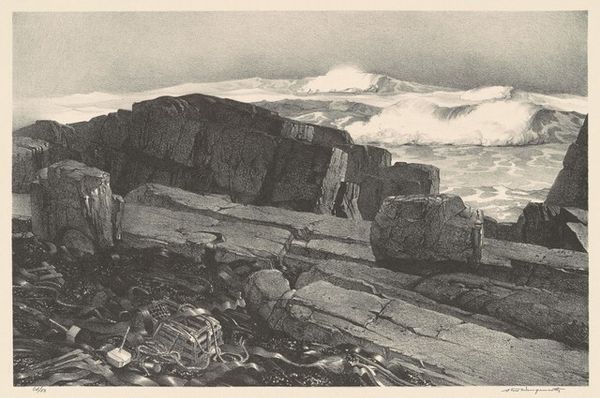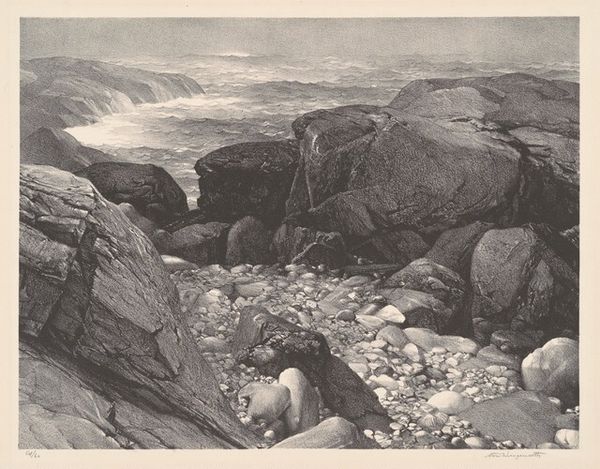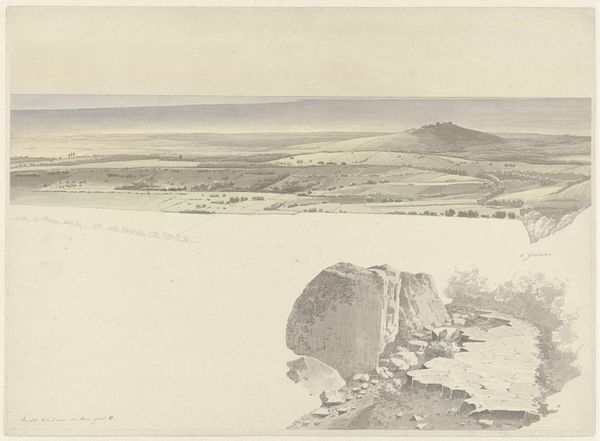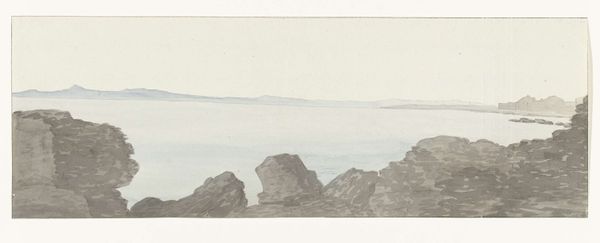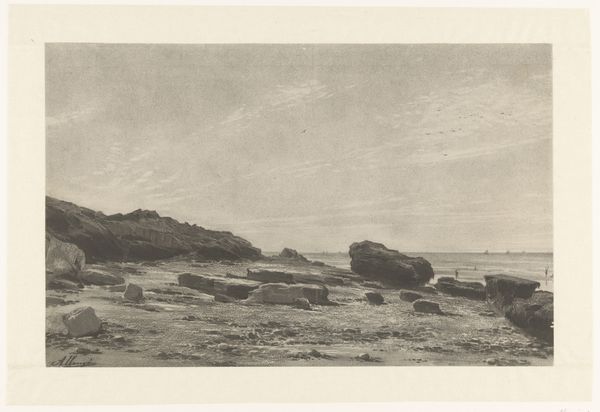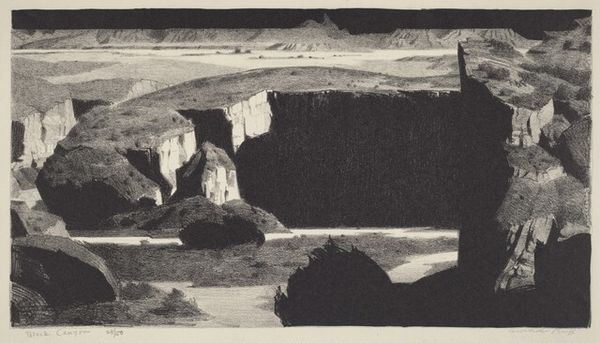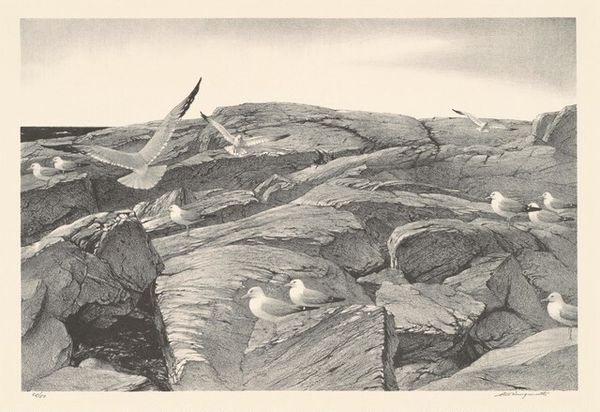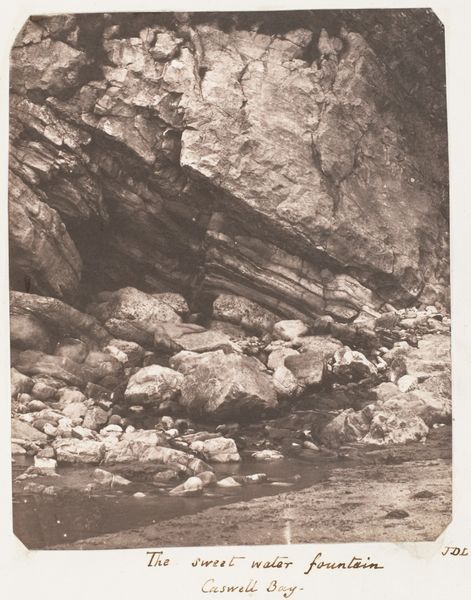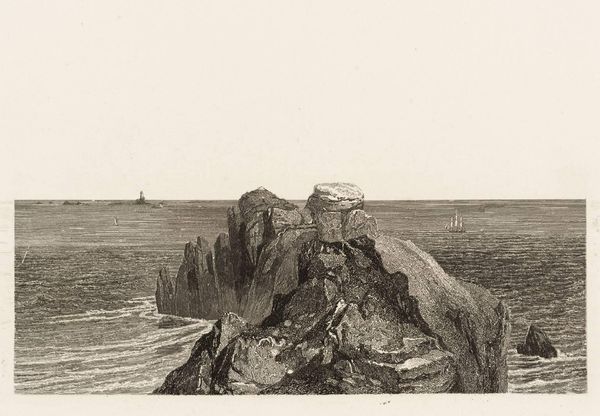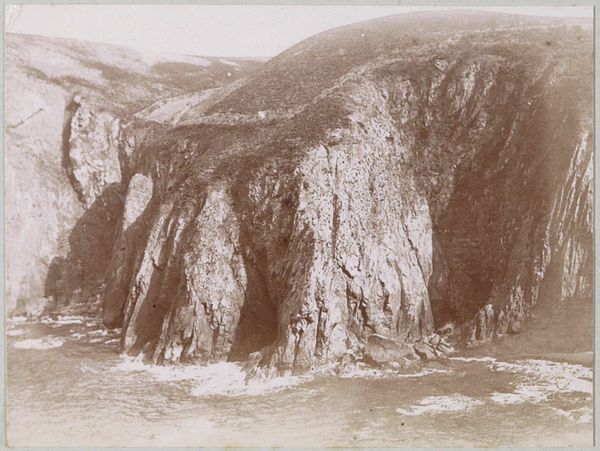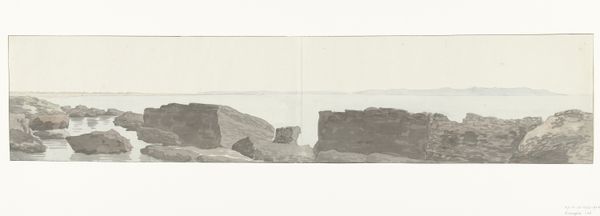
#
shading
#
pencil drawn
#
natural shape and form
#
light pencil work
# print
#
little shading
#
pencil sketch
#
old engraving style
#
ink colored
#
pencil work
#
shading experimentation
Dimensions: plate: 28.73 × 42.55 cm (11 5/16 × 16 3/4 in.) sheet: 32.7 × 46.83 cm (12 7/8 × 18 7/16 in.)
Copyright: National Gallery of Art: CC0 1.0
Curator: This is Stow Wengenroth’s "Storm Ledge," a print from 1950. Editor: The textures immediately strike me—a rough, almost palpable quality to the rocks. It feels cold and unforgiving. Curator: Wengenroth's seascapes, especially those of the Maine coast, often evoke that sense of starkness. We should contextualize this within the broader artistic movements of the mid-20th century—a reaction against the idealized landscape, perhaps? Editor: The almost obsessive rendering of the rock surfaces, and the obvious work that went into it makes me consider Wengenroth's labour as a craftsman. It's far removed from the fleeting brushstrokes of impressionism. How much time must have been involved in building these intricate shades? Curator: It is compelling to think of the labor that it took, in terms of class dynamics of artmaking, this print could represent the everyday life and industrial history. The deliberate choice to depict this scene of rough hewn natural environment also situates Wengenroth's position against more comfortable depictions of land. Editor: Do you think the somewhat limited palette of the print reflects a wider social environment? Curator: The reduced colors in this lithographic process evoke feelings related to industrial progress and wartime experience. This type of reflection resonates through multiple themes related to identity and race—creating more depth in this image, rather than just some pretty rocks by the ocean. Editor: And how the image is created becomes relevant. A print can be more easily and widely distributed than an original painting, for instance. Curator: Exactly! So, it has inherent democratic qualities to it—access to images beyond the elite. Its wider distribution would lead it to becoming not only the realm of collectors but that of workers, immigrants, and women. Editor: Seeing the landscape in a new dimension is the perfect takeaway. Curator: I agree, by revealing and challenging art norms, and reflecting a collective consciousness and struggle. Thank you.
Comments
No comments
Be the first to comment and join the conversation on the ultimate creative platform.
